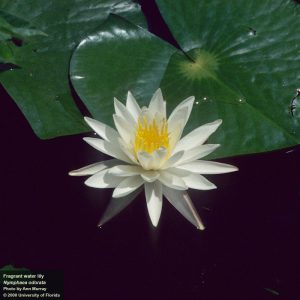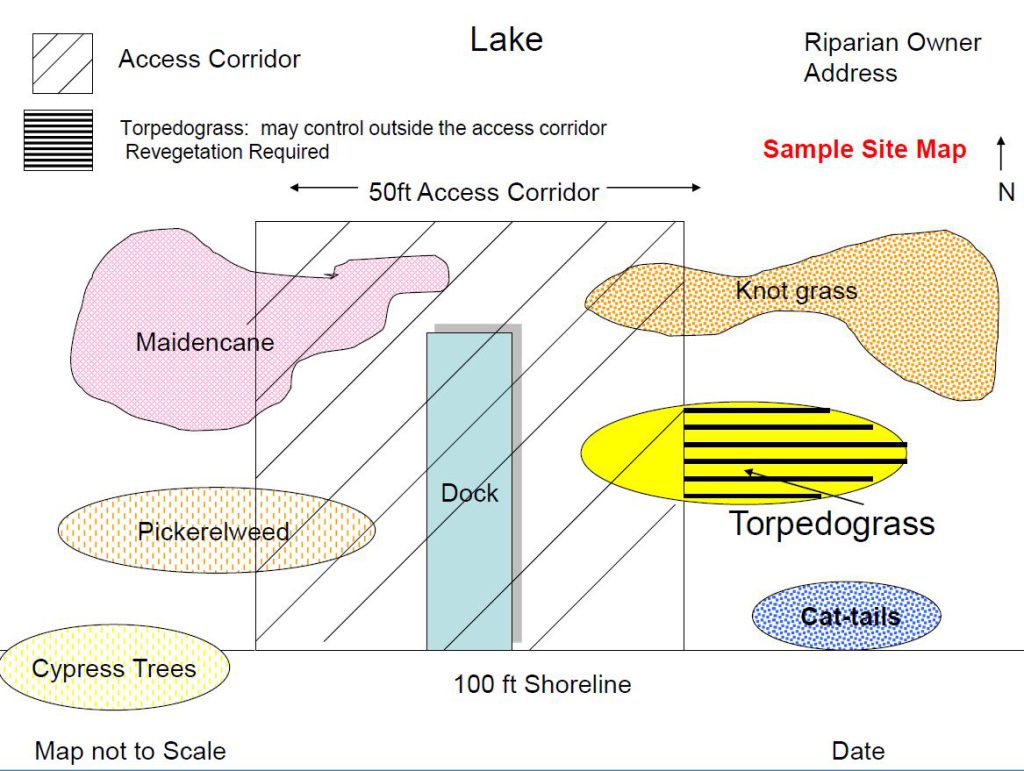Protecting the waterfront is Principle #9 in Florida-Friendly Landscaping. Waterfront areas can include lakefronts, ponds, ditches, other water bodies and environmentally sensitive areas. So, what makes a nice aquatic landscape?
• Full of native plants
• Managed nuisance vegetation
• Provides access for recreation
• Aesthetically pleasing
Protecting the shoreline from erosion, plants stabilize sediment and makes the water body cleaner and clearer. Aquatic plants filter pollutants, uptake nutrients. They also provide habitat for fish, birds, and invertebrate species. Shoreline plants help to:
• Slow runoff
• Catch sediment
• Capture nutrients
• Provide wildlife habitat
• Protect water quality

How to get started:
First, check the rules and get permits from your local municipality. Decide if you want a clearing for an access area for your boat. Create a planting plan diagram on paper listing the spacing and plant species. Spray with herbicide or remove nonnative nuisance plants by hand. Usually, aquatic professionals are hired if chemicals are used because only certain aquatic approved herbicides may be used.

Maintain your site with Lake-Friendly Landscaping practices:
Select low maintenance Florida native and Florida-Friendly plants. Use phosphorus free fertilizer and slow-release nitrogen as both of these nutrients are harmful to water bodies. Maintain a 15’ buffer with no fertilizer or pesticides adjacent to the water body. Conserve water as overirrigation can leach nutrients into water bodies. Divert downspouts into turf and landscape areas, not the water body.

Resources
A Stewardship Guide for Orange County Lakefront Homeowners
https://orange.wateratlas.usf.edu/upload/documents/Lakefront_Homeowners_Guide_Rev11-2018.pdf
Florida DEP Bureau of Aquatic Plant Management
https://myfwc.com/license/aquatic-plants/
Orange County EPD
https://www.orangecountyfl.net/Environment.aspx
St. Johns Water Management District
https://www.sjrwmd.com
South Florida Water Management District
https://www.sfwmd.gov
UF/IFAS Lakewatch Program
www.lakewatch.ifas.ufl.edu
Learn about your lake on the Water Atlas
www.orange.wateratlas.usf.edu
Orange County Lakeshore and Wetland Impact Permits
www.orangecountyfl.net
Seminole County Permits https://www.seminolecountyfl.gov/departments-services/development-services/building/
www.fasttrack.ocfl.net
Invasive Species Reporting
www.invastivespeciesinfo.gov
FWC:Florida Fish and Wildlife Conservation Commission
www.myfwc.com
Want to learn more? Check out horticulture classes offered by UF/IFAS Extension Orange County at www.ocextension.eventbrite.com. Read about Florida-Friendly Landscaping™ https://ffl.ifas.ufl.edu/. Follow us on Facebook https://www.facebook.com/GardenFlorida/ and Instagram https://www.instagram.com/oc_extension/ and visit our website https://sfyl.ifas.ufl.edu/orange/home-lawns-landscapes-and-gardens/florida-friendly-landscaping/.
 0
0
